#? (might still be relevant?)
Text
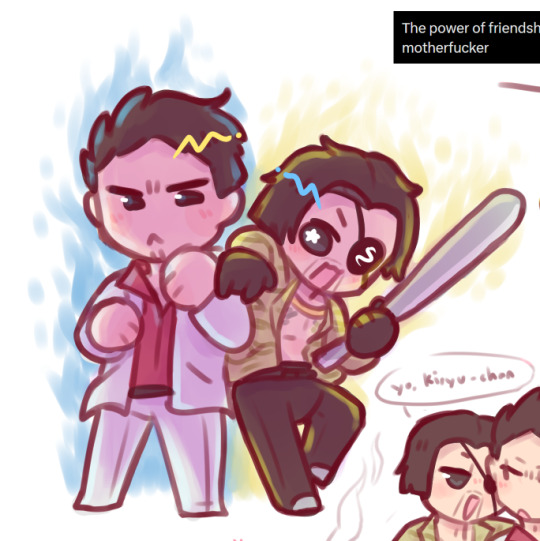




various doodles again
#i still need to figure out how to draw majimas hair...#why are bowlcuts so hard#its not even a full bowlcut i think. he only has his forehead exposed#but other than that#have some light kazumaji stuff + tachibana doodles i love my real estate man#yakuza#龍が如く#yakuza series#rgg#ryu ga gotoku#kiryu kazuma#majima goro#kazumaji#tachibana tetsu#ichiban kasuga#ryo aoki#doodles#digital art#fanart#y7 spoilers#? (might still be relevant?)#spoilers#pinky's gallery
352 notes
·
View notes
Text
Queen instrumentals playing in Give Me Coffee or Give Me Death
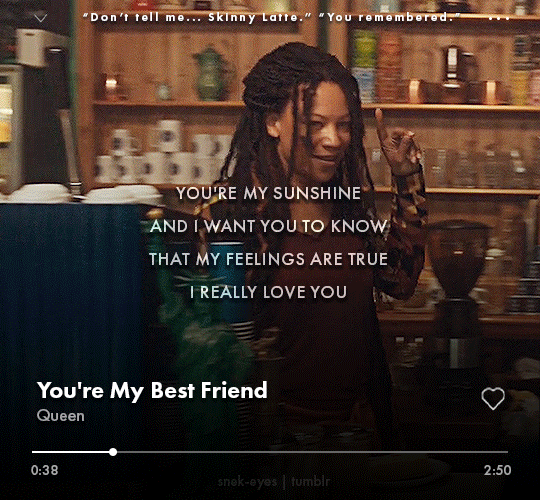




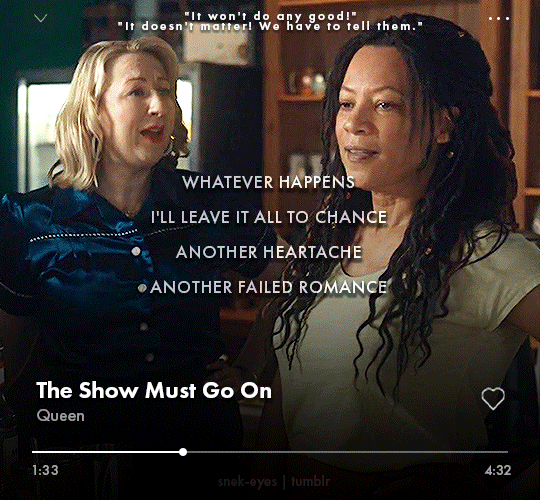
(instrumentals arranged by Eos Counsell)
(insp. / template / BoRhap breakdown)
#good omens#good omens 2#goodomensedit#nina good omens#maggie good omens#metatron#maggie x nina#nina x maggie#v watches good omens#v posts things#this delights me#we spent so much less time with Crowley in the Bentley this season but they still found a spot for Queen#ngl i did not recognize them all on my own so if the xray feature thing is wrong. well#BoRhap is the only one i know/could hear well enough to recognize the specific part of the song#so the rest i just chose applicable lyrics#metatron one despite everything might be my fave as both wizard of oz and omelas reference#also radio ga ga supporting Nina#there are some shorter scenes where you can hear it playing but it seemed less relevant#it's always the same song for the whole episode (day?) except ep 1#also just discovered you can accidentally drag an image into the tags. this sure is a webbed site heh
694 notes
·
View notes
Text
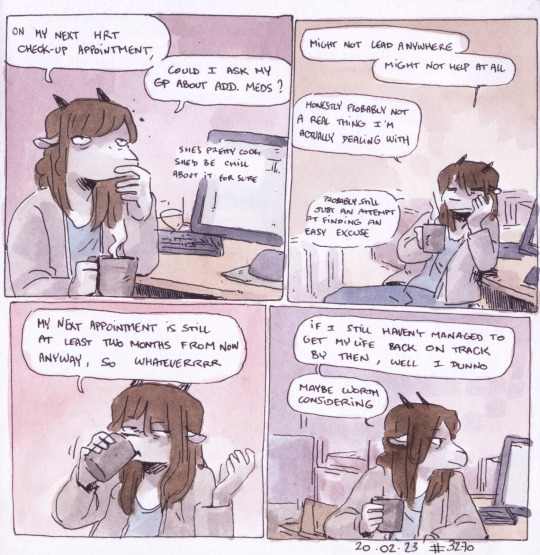
#20.02.23#3270#ok hi resuming regular posts; do keep your attention on palestine though. also what's going on in congo & sudan#i might try to keep a day for sharing more non-comics stuff once in a while (also i still need to answer asks n stuff sometime)#anyway re: the above comic i am not on add meds nor do i rly know if that's to consider still idk if relevant to me#ive started some depresshun meds a while ago but questionable results sofar. life still needs work
209 notes
·
View notes
Text

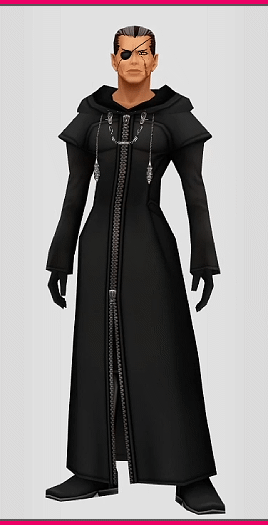
Kingdom Hearts Dream Drop Distance - Braig / Xigbar
#kingdom hearts dream drop distance#khddd#braig#xigbar#my gif#his pointy shoulders deflated with age#...do you ever wonder about his scarf?#radiant garden took pride in its beauty and ansem the wise was a ruler who was beloved and admired by his people (despite... yknow)#so is it safe to assume that being a guard of this world being tasked with protecting the castle/its ruler/and the townspeople-#would be considered a prestigious occupation?#yet we see braig wearing an old tattered scarf#it's a curious addition to his uniform that looks out of place among other guards#i dont think it was added to his design to help him stand out because cmon it's not like he's competing for relevance with dilan and aeleus#braig fights from afar with his guns it's not like he's some scrappy guy that might have messy clothes from battle#i wouldn't be surprised if this was ephemer's scarf that he somehow came into possession of#and is holding onto it with the possibly of it being used as some kind of medium/waypoint#who's to say he's not still wearing it under his organization coat? just because we can't see it anymore doesn't mean it's gone#riku had an entirely different outfit under his own organization coat so who knows what xigbar has under there#i like to think braig used to be scolded for wearing the scarf because it covers up the uniform's emblem#and wearing old ripped articles of clothing isn't part of the image the guards would presumably have to uphold#but eventually they gave up on making him take it off because he just does whatever he wants#just something i think about from time to time#xigbar has always been so mysterious and cryptic i can't help but keep an extra close eye on him#especially since he's been revealed to be so much more than what he seems. who knows what tricks he has up his sleeve#i don't think it's outside the realm of possibility
274 notes
·
View notes
Text
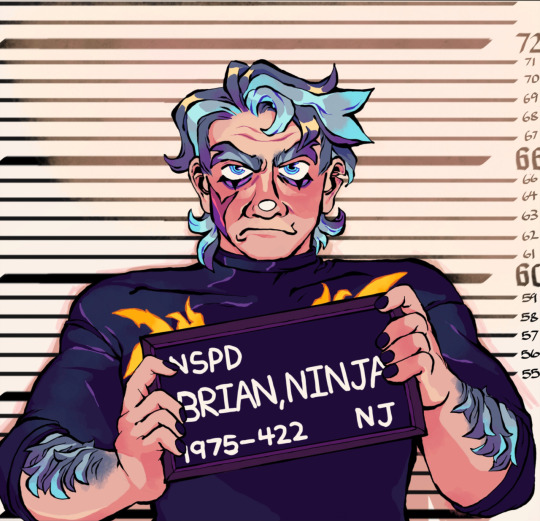
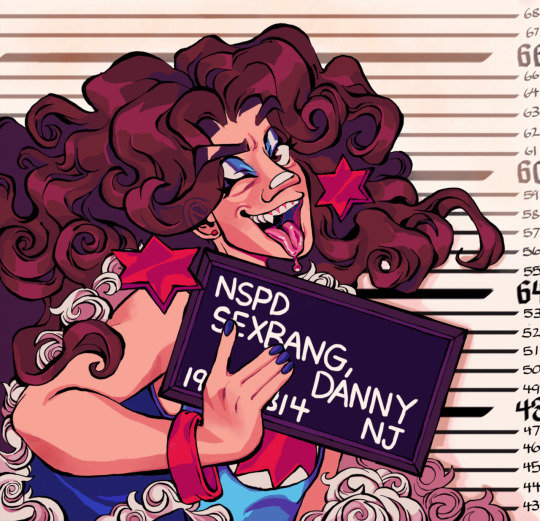
come on, danny, let’s go party! 💗
#danny sexbang#ninja brian#ninja sex party#honeyart#+ like. might as well spam the notes on this one#TLDR! this was An Ordeal#started this when the barbie meme was still relevant- and then my computer died! got a new one bc i thought it came with a stylus! it didn’t#this was finished on my phone and um. you can tell#there is SO MUCH i wish i could change or go back + fix but also like. i kind of want to stop thinking about this for the rest of my life#i appreciate it for what it is though? i learned a LOT and tbh that’s all you can really ask for#dan avidan#brian wecht
446 notes
·
View notes
Text


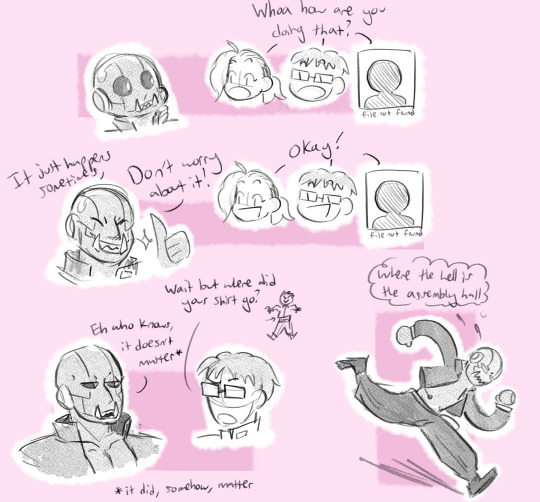

as expected the fma mobile game event side story that inexplicably features og greed and ling as high schoolers is just as wildly batshit as you'd expect - all these shitposts are all taken nearly Verbatim from the translation shit really was just that funny i still laugh when i think about it
(also in case ya'lld like to see it for yourself i saved all the screenshots and google translations to a zip file here though fair warning they may or may not be in order good luck o7)
#hard to pick a favorite part of the storyline between#ling being a hitman for hire who's paid in junk food#greed still having his ultimate shield but refusing to explain how and everyone is fine with that#which then manages to be Plot Relevant not because the shield is invincible#but because of the gag that he somehow doesn't have a shirt when it's on so he looses flag tag because his flag falls off#also oliver saying and I quote#'come transfer student i'll break the bridge of your nose'#fma#fmab#fullmetal alchemist#fullmetal alchemist brotherhood#fullmetal alchemist mobile#fmam#greed#ling yao#shockingly no greedling!#actually my favorite part might be the premise of the entire plot#which is this school apparently has hunger-game style death matches between homerooms each year#and ling nominates greed to head their class despite the fact he Just Transferred#and has No Fucking Clue what is happening or even where half of the classrooms are#i was Shocked the ending of this storyline wasn't greedling waking up in the woods like 'damn what a weird dream'#given neither greed nor ling has been to an actual public school i assume this entire plot is just what they think happens there#anyways#my art#doodles
391 notes
·
View notes
Text
Things I have heard from white cis men in academia, and from them only :
What are even "emerging voices" ?
Are you sure there is any Euro-centrism to push back against, in this discipline?
I mean I've never done it, but I might as well apply for it ! *gets an interview for the job*
I don't think there really is an issue of gender at the Department [gender balance: 80/20]
Writes an article about gender bias - with three other men only.
But why would you put so much effort in that
#going through my drafts#might as well publish that one because it is still relevant after a full year sitting there#academia
73 notes
·
View notes
Text

susan woodingssssssss
#the walten files#twf#susan woodings#the walten files 4#i think she might be my favorite tbh💔 i hope she's still like. relevant to the plot 😭#eyestrain#blood#<-juuuust in case
49 notes
·
View notes
Text
i think i've drawn lankmann a few times. just a couple









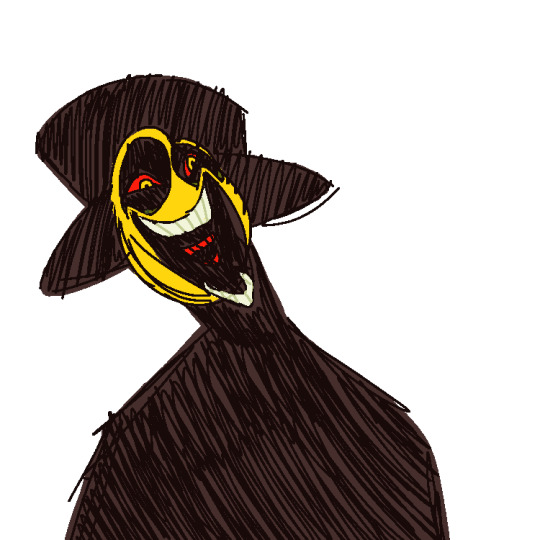
#silverware's art#lankmann#pastra#pastraspec#he's just waay too fun to draw for some reason#i didn't wanna do the weird glitching he has when he talks#idk why. but i organized them from least creepy (to me) - most creepy (yet again. to me)#the one where i wrote “i'm back around” is actually a song lyric-#can't hold me down by genichris. specifically. a song actually made about lankmann that is very catchy. by the way.#many wouldn't be too impressed to know that pretty much everything in my computer has some relevance to Lankmann-#some of my friends would defiantly use that against me but hey. they might not read the tags#eh it's alright. he's an interesting character#also. IT'S SO WEIRD KNOWING HE'S ONLY 5'5"-#I'M TALLER THAN HIM#by less than 2 inches. but i'm still taller#this has been sitting in my drafts for over a day so i might aswell post it ig
33 notes
·
View notes
Text
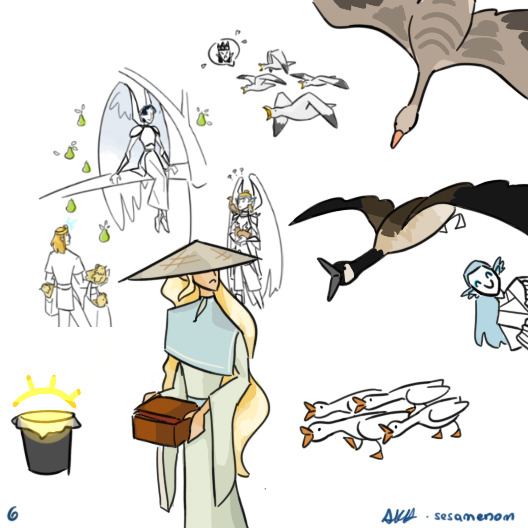
six geese a-laying, FIVE GOLDEN RINGS! four calling birds, three french hens, two turtle doves, and a partridge in a pear tree
-
on the day 5 poll for what to do with the rings, "THROW IT AWAY" won at 30.9% as of drawing this, so great choice everybody! The authorities (manwe's pet geese) have been alerted and the rings have been disposed of.
now, for a totally unrelated question......
#silm#silmarillion#annatar#manwe#geese#wow ive gotten a lot better at drawing birds over the course of this thing lol#these geese arent quite laying#six geese a-slaying?#five golden rings! (in the trash)#four screaming birds three valian hens two turtle doves and an elwing in a pear tree#in the background you might see elwing and eonwe now have armor!#(this may or may nto be relevant later :)#this is a very fun and interesting format to work with#also a little aggravating at times because WHY ARE THEY SO BLURRY#but you can still see the tiny birds and the pears so its fine :)
56 notes
·
View notes
Text

I CAME AS SOON AS I HEARD!!!
WE WON!!!!
#SQUIRRELSTAR SQUIRRELSTAR SQUIRRELSTAR SQUIR-#a starless clan spoilers#Still haven't read a starless clan#probably won't tbj#but i am happy for this#nothing else is relevent or matters now :))#art#my art#battle shenanigans#my designs#warrior cats#also hi it's been a minute#this might not mean anything and i am sorry for the lack of art i just havent been into cats
57 notes
·
View notes
Text
Deku: see! all the problems youve ever faced are all all for ones fault! its not the world thats bad! its just all for one!
Tomura, who now knows about The Lady Nagant Lore: what.
#my post#wrote this before the actual flashback reveal but still feels relevant ykw#couldnt stop thinking abt this#tomura shigaraki#shigaraki tomura#midoriya izuku#izuku midoriya#lady nagant#well. shes there in spirit#bnha manga spoilers#bnha textpost#this might b exclusively funny to me but#bnha incorrect quotes
46 notes
·
View notes
Text
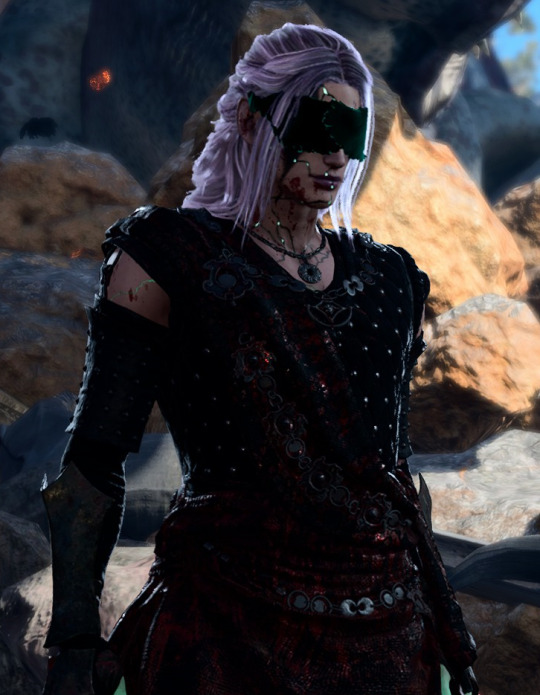
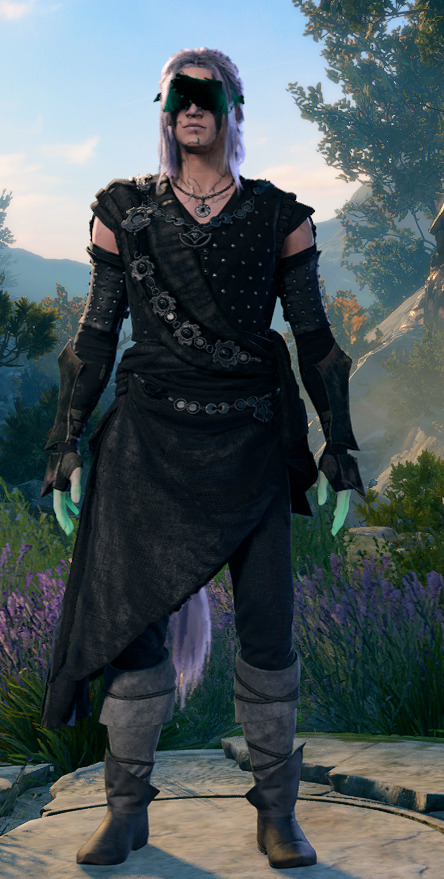
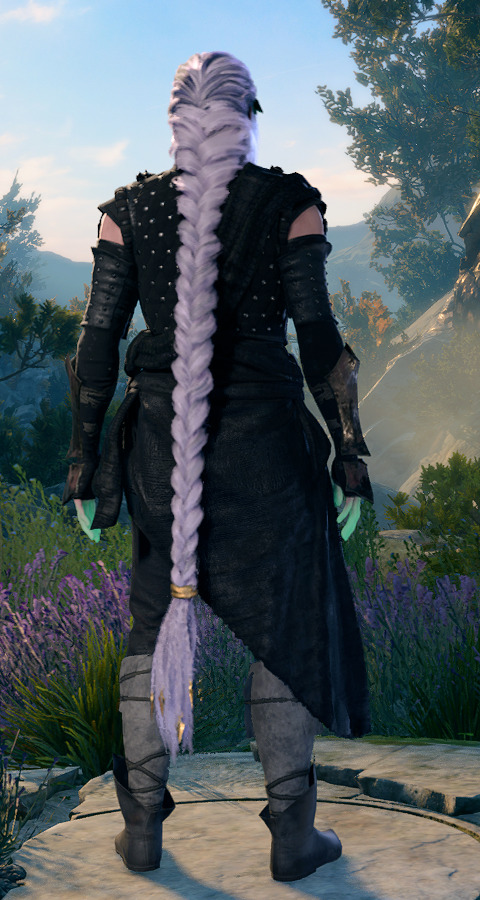
are we rockin with baby's second attempt at an evil durge run
#this is zephyr . fallen aasimar (actually plot relevant not just hashtag edgy)#i tried doing an evil run with default durge but i think the problem w that is with him not rly being an Oc its hard for me to get attached#and ive wanted to actually play an aasimar for a lil bit. so hi zephy#his design might still be up for change a little bit but :)#he's gonna be a gloomstalker ranger#rev txt#oc:zephyr#oc tag
32 notes
·
View notes
Text

Inktober Day 26 - Discarded
Once again I've started rereading @post-it-notes7's fic Heart and Soul and am as always having a Wonderful time with it unlike the protagonists
(will probably go back in and add the shading later but for now it's 2am so it's gettin posted!)
#I still plan to do the shading but idk if i'll be able to have it done before october ends since i'm about to fly out for a conference lol#i Might be able to take my sketchbook but i might also just wait to do it some other time when things are less hectic#def do plan to finish it up at some point though#inktober#inktober2023#meta knight#galacta knight#heart and soul#h&s#do i still need to tag spoilers the relevant chapter has been out for quite a while by this point haha#despite reading the relevant chapter like 2 days ago i couldn't recall if the moon phase was mentioned so feel free to ignore it if I'm off#my art#doodles#drops gk like a sack of flour#he's fine
214 notes
·
View notes
Text
Justice as spectacle in Fontaine, or a too long word vomit from a tired PhD in Law gushing over Genshin 4.0
Alternative title: “Justice must be seen to be done”, a visual playbook by Genshin 4.0
Intro: This is a valid use of a PhD in law, actually.
I made the mistake of playing the 4.0 update of Genshin while I was finalizing my PhD in law and politics, and the result was my brain refuse to think about anything else than judicial performativity and the use judicial spectacle in Fontaine. So time to make good use of 9 years of University by dissecting why I absolutely love how Fontaine’s justice system is presented. It was initially much longer and covering why justice as a spectacle is not necessarily an issue or sign of a disfunctionning legal system, then what exactly about the Fontainian justice system is actually fucked up, but it got too long so I’m keeping that for the indeterminate future. So the pitch of this thing is: Mihoyo is basically providing us with an animated First Person POV game version of legal ethnographic works on justice and the courthouse, and it is really cool.
And since I am a nerd with both too much time to read and to play, we are making this a proper academic, with literature and all, because listen to me, LEGAL ACADEMICA IS COOL, ACTUALLY, and law and literature at large is a genuine field of study that we, as a society, need to talk about more.
[also there is non-zero chance that I edit this brainrot and submit it for publication at some point]
Warning: I am basing this on 4.0, up to and including Act IV Chapter II (hence no discussion of the prison system) and if Mihoyo thwarts the whole thing with 4.1 [oops I am late so now 4.2, since 4.1 did not thwart it] then let’s do what we do when new results contradict existing theories in academia and just collectively agree to ignore it.
TL;DR: Someone at Mihoyo read Simonett’s 1966 essay on The Trial as One of the Performing Arts [Here, just read it, it is fascinating] and decided to make it everyone’s problem
Part 0: if this was not Tumblr.com I would make a recap explaining broadly what Genshin and Fontaine are but since you are reading this I’m going to assume you already know the context.
Part 1: Ok so how does the Fontanian Justice system work, exactly?
Alright, so each area of Teyvat has 1) one core theme/value and 2)a threat to that core theme/value.
Mondstadt has Freedom and people living in fear of a dragon.
Liyue has Contracts/order and the pandemonium of having Rex Lapis killed.
Inazuma has Eternity and being virtually frozen in time.
Sumeru has Knowledge and being entirely manipulated by the Akademia.
Fontaine has Justice and… Justice being parodied into a spectacle?
WRONG.
Because the spectacle of justice, especially the way it is done in Fontaine, is not antithetic to Justice itself. Spectacle is part and parcel of Justice and of any courthouse. Sure, all the dials are turned to 11 and y’know, it is legit called an Opera, but that is more the writers being a bit on the nose and adding drama for the player. The spectacle of Justice, itself, is not that far off from reality. And, hot take but bear with me: it is not (necessarily) a problem.
Ok, let’s dive into what we know of the justice system in Fontaine.
Broadly speaking, we have seen the criminal justice system, and it is an accusatorial, or adversarial model. It’s the US-style criminal procedure: you have a defendant trying to prove that they didn’t do it your honor, and a prosecutor proving that they totally did it your honor. To avoid this becoming a fistfight, you have a strict procedure to follow outside but especially inside the Court, and in the end, a neutral third party decides on the outcome or the trial.
Ok, now let’s zoom on a few things, and why the theatrics of them are actually very common.
Furina, our cringefail darling, is the prosecutor. And they get a lot of stuff right regarding the role of the prosecutor! She decides whether or not to prosecute, based on the information that she has, and whether she likes her odds or not. Fittingly since she is the Archon, the prosecutor in a trial represents the State, the interest of the State (the judge ! does ! not!). It makes sense that Furina, the ruler (theoretically) would be prosecutor and not judge. Moreover, and as we see plenty of times during the trials, Prosecutor Furina is not concerned with the victim, and not even necessarily with the truth; the prosecutor wants to know how likely they are to obtain a conviction in the end. Her job is to be convincing enough to establish a legal truth.
Neuvillette, for his part, sometimes look terribly powerless… but friends, that is what a Judge sitting during a criminal case often is. The first part of his job is to find sufficient information for the prosecution to decide whether or not to prosecute; he is supposed to be entirely neutral at this stage. He kickstarted the investigation straight after the death of Cowell, and was also the one starting investigation on Vaughn right after Lyney is proved innocent. He gathers enough evidence, hands them over to Furina and asks “So? Are you game or do you want to leave that alone?”
And once the prosecutor has decided to move forward with prosecuting, his job is to make the procedure move along, take some decisions based on new information, ensure all respect the rules (hence Childe’s immediate smackdown when he starts to act out a bit too much at the end. My man is here to make sure the rules are enforced and that also applies to Snezhnayan gremlins). In the liminal space of the courthouse, he is the supreme authority… over the procedure. He can tell anyone, including Furina, to stfu k thx. He starts and stops the trial. He allows witnesses to be heard or not.
And the last party involved at this point is the defense, usually the Traveler and any adorable twink we befriended that day [good for you, Traveler, good for you]. They present evidence, they have to be convincing, it’s basically Ace Attorney, we know that part.
Part 2: Mihoyo makes it clear that we are all actors in the Courtroom
Ok, first moment of pause.
Even though these are the most basic parts of a criminal trial, they are ALREADY steeped in drama and theatrics, both IRL and in Fontaine.
First off, Furina plays a prosecutor, Neuvillette plays a judge and the Traveller plays the lawyer.
No but really: they play their role in the Courthouse.
The game painstakingly presents Furina for the first time not as a prosecutor in a courthouse but as a cringefail princess. When we see her initially welcoming the Traveller, going “Fight Me” at them in the streets of Fontaine, she is not a prosecutor, she is just Furina the cringefail princess. We meet Furina as Furina, and later on only, we see her with her Prosecutor face. Furina is not a prosecutor, outside of the Courthouse.
I don’t even have to explain how much Traveler plays lawyer. We are, and I cannot stress it enough, NOT lawyers (yes, even you who developed an unhealthy obsession with Ace Attorney before Genshin). The developers even took the time to develop an entire new gameplay to really, really highlight that is a behavior that the Traveler can only have in the Courthouse. Traveler is not a lawyer outside of the courthouse.
Neuvillette is a bit of a special case. We do meet him for the first time in the Courthouse, as a Judge. But once again, the moment we meet him outside of the courthouse, he is much more approachable, definitely not the same persona as when he bitchslapped my problematic Harbinger into the Meropides prison [we are so going to write something about the Meropides prison once I have played enough 4.1 my friends – update post 4.1: ok Mihoyo that was weak commentary on the privatization of prison and prison labour but I’ll take it]. Neuvillette is probably the one that is the most associated with his courthouse persona, but there is still this gap between Neuvillette-Judge and Neuvillette-reflecting-in-the-end-of-Chapter-II.
So everyone is just themselves in their daily life, but there is something about a Courthouse that turns people into their judicial role. That’s what we call the liminality of the courthouse (Hadar, 1999). And it exists IRL, in a way shockingly close to what we see in the Opera Epiclese.
Magistrates, whether prosecutors or judges, do not act in their own names, they have a role to play. Someone woke up that morning, had breakfast, swore at the neighbour who did not park properly again, spilled some coffee on their documents again ffs, stumbled a bit on the little steps leading to the courthouse, and then, they put on their costume and started to play the role of the judge. As someone who has been in what can only be referred to as “backstage” of a court , and entered the courthouse with the magistrates, I cannot stress enough how drastic the shift in person is the moment a magistrate steps into the space of the trial room.
From there on, they are a Role. Furina, like any prosecutor, is not a prosecutor, until they are The Prosecutor, and then they are not themselves anymore, in the enclosed space of the courthouse. Have you ever seen a lawyer talk in their daily life the way to talk in a courthouse? No. Someone is just some person, until their put on the robe and their Lawyer Face and start their Lawyer Movement and Lawyer Tone. Traveler cannot go all OBJECTION when they have a disagreement with a random shopkeeper in Teyvat. The game doesn’t even give you the option – because you are not lawyer, unless you are in the court. None actually plays a lawyer, unless they are in the courthouse.
And an adversarial model encourages this. You have character, but for it to be a play, or an opera, you need a narrative (murder, ok, that will kickstart a narrative) and you need dramatic tension. Drama is created by the opposition of two characters having opposite goals, confronting each other. Simonett, a former Minessotta Supreme Court Judge, has a fascinating article called “The Trial as One of the Performing Art”, which really ecapsulates how an adversarial system is built on this drama:
‘The trial has a protagonist, and antagnonist, a proscenium and an audience, a story to be told and a problem to be resolved, all usually in three acts”.
More than an inquisitory model (hello, fellow continental Europeans), parties are encouraged to bounce off each other, take initiative, undermine and interact with each other. US courthouse TV shows loooove that, and Genshin absolutely leaned into that. The potential for drama was so strong and intrinsic to the story that For the first time, we got to play a character that was not even with the traveler: Traveler was off investigating, and we played Navia in the courthouse, because the sheer drama of being in the courthouse is too good for the game to pass.
Do you see it yet? Here is more. A judicial role is a role. IRL, a lot of it is emphasized by the robes -the - sometimes complete with wigs and accessories- that judges and magistrates must wear before entering the space of the courthouse. You put them on like you put on a costume -defendant, prosecution, judge and even audience alike (Cabatingan, 2018), there is a ritual of preparing for the performance of a trial the way you prepare for a play. Genshin characters cannot change their clothes [give us a proper fancy-af-judge-robe for Neuvilette Mihoyo you COWARDS], so the game does all it can to realllllyy show you a separation between the judicial role and the actor playing I in the courthouse.
Part 3: Game designers said yes this an Opera and a Courthouse because these are the same thing and they are right
[The urge to include Foucault in this section, but I do not have Discipline and Punish with me rn, rip]
Ok, ok, why not. But what about the stuff that is not in your random courthouse, like a damn AUDIENCE and the fact that it takes place in an actual OPERA ?
Aight, we gotta dive a bit deeper into two things: the role of audience in the judicial spectacular, and studies on legal architecture/judicial space. I told you legal research was cool.
Let’s start with the most obvious one: architecture.
The architecture of Courthouse is actually really important for the delivery of justice. The building embodies the task itself, and targets evert single person that interacts with the building in any way? It matters specifically because we take it for granted, that this this is just a building, that there cannot be more to it. Or: “Law in its everydayness, banks on the usage of visual means of representation, for they seem to lack artifice, and thus enjoy high persuasiveness” (Kumar, 2017, also this is a study on the architecture of the Indian Supreme court and it is so good). But thi is, of course, on purpose.
My friends, your local courthouse looks like an opera. Recently, I went to a play which was entirely a trial, and they barely had to do anything to set-up the scene because… the opera looks like a courthouse, and vice versa. Fontaine’s Opera Epiclese is this on steroid, and also actually used for entertainment like the magic shows, but its architecture and structure are so close to a proper courthouse that once you see it you cannot unsee it. Not matter how different they might look from each other, all, ALL courtroom have the same setup:
Judges on an elevated position compared to all other parties : Neuvillette absolutely kills it here [my man is placed so high up I was close to writing something about the religiosity of justice.]
Prosecution and accused on two opposite sides, virtually separated by the judge, even putting the defendant in their own little liminal space in the liminal space (Zoettl, 2016, Mulcahy, 2007)
Audience space and trial space clearly separated, with interdiction for the audience to enter the trial space
Audience space allowing to clearly see all angles of the trial space
The architecture of courthouse is strikingly similar to that of an opera’s, both in its spatial organization and its grandiose. The entire building is an opera, not just the ground of the stage. You even have a lobby, the space right in the Opera but not the courtroom, which is very similar to the space where people mingle during the interlude at the Opera – the social settings were many legal negotiations happen (Hansen, 2008)
[Fun fact: I am pretty sure the design of the audience space of the Opera Epiclese was inspired by two Parisian Opera houses: the Théâtre de la Comédie Française et the Théâtre du Châtelet. The stage itself is almost more church-like ; I am curious if anyone knows what the inspiration for the “outside building” actually was, for the Opera Epiclese?]
Eltringham (2012) has some really cool writings about the architecture, and people interact with the structure of courts (in his case, the International Criminal for Rwanda) and how all these features contribute to making the courthouse this liminal space where people can play their role, whether they realise it or not.
But, Almost-doctor, I hear you say, what about the spectacle ?! The audience enjoying the show ?!
Ah, yes. The audience. Just as with an Opera, the audience and the actors enter through differentiated means (the “segregation of circulatory systems”), all with their own point of access to the stage or the seats, and never the two shall meet. It is so important to a court system that you will find this feature highlighted by the architects that renovated the Bordeaux Courthouse and the US courthouse design and planning guide [These are just fun and striking illustration I stumbled on while writing this, you can find dozens of others from any given country]. These differentiated access path help reinforce the liminality of the courthouse not just for the actors, but for us, the audience as well.
You could even agree, with Garapon, that the audience itself is “playing” the audience, in the Courthouse (go read Garapon’s 2004 book, if you read French, it’s so good I swear and like it fueled 90% of whatever this word vomit is)). You are not really yourself, you have new, liminal role of spectator. A trial has a “need for a public”, even a silent one. “'Performance always intends an audience”, for Kapferere. and we can indeed talk about a Performance of Justice, when talking about how justice unfolds in the courthouse, especially in a criminal trial (Sausdal and Lohne, 2021).
The audience is an inherent part of the spectacle of justice – because is there a spectacle if there I no audience? If comedians perform a play with no audience, did it really happen? In the words of our own European Court of Human Rights (I am quoting the ECtHR on Tumblr.com, what is life): “Justice must not only be done, but must also be seen to be done” (Delcourt v Belgium, 1970). For Garfinkel “Legal rituals ... depend on the outside witness to confer on them not only recognition but validity” (Garfinkel, 1956);
Or, to put it more eloquently: “The need for the presence of a validating public at trials is enshrined in many constitutions and built into the very fabric of court complexes throughout the world. (…) Tthe court as a whole requires its reflection in the bodies of validating witnesses in order that this created place will bring sufficient gravity to itself.” (Eltringham 2012).
If a courthouse was just about the truth, or the parties involved reaching an agreement on what the truth is, there would be no need for the theatrics. We could handle a trial in a meeting group like problem-solving session in any run-of-the-mill company. Put everyone around the table, have a moderator, have a decider. That actually exist, it’s called arbitration, and you may have never heard of it despite the absolutely enormous amount of money that are involved (we are talking literal Billions of dollars every year, here), because the whole point is that it is discrete and confidential. But that is not how trials are, anywhere. It does exist though. It is called private arbitration, a form of private justice that focuses on problem-solving, expediency and secrecy, often because my friends, it involves big names and big money.
But justice? My friend, it needs to be a spectacle. It needs an Opera. Because this is how it gains sociological legitimacy, and it needs sociological legitimacy to function. By having an audience, it gains transparency and accountability.
Conclusion: teaser on why the spectacle of justice is not necessarily always totally bad, but also I am too tired to fully argue that.
Now, you might that it’s a bad idea. That what Genshin is doing is denouncing this inherently spectacular aspect of Justice, that there is something inherently wrong in justice being public and publicized for the gain of legitimacy, and sure, spectacular justice can become a parody of justice or a manipulation of justice and this has happened many times in history. And yes, you could go for that (although show trials have typically been at the service of an authoritarian regime in a transition phase, rising or declining, and target political opponents, which we do not see in Fontaine) but… I have another take for you.
Justice being a spectacle is not… inherently bad.
Hear me out. Making justice into a spectacle does not have to affect its outcome. The presence of a public does not change the course of a play.
Spectacular justice brings elements of entertainment such as narrative fulfillment and catharsis. That is clearly what Fontainians want: a satisfying end to the story, the truth exposed. Justice as a spectacle help people make sense of their reality, comfort them in knowing that justice does prevail. That the guilty do not go scott-free, that the good guys win, that justice is transparent, that prosecutor need to be able to build a good story to prosecute, and there is no good story is there is not someone who caused harm, and a victim that deserves justice. And, from the information we have so far, this does not seem to lead to miscarriages of justices, or a generally biased justice system. But frankly this is too long already and I just wanted to show that the depiction of the Spectacular in everyday justice is actually present everywhere IRL, and Genshin is just providing a really handy illustration, at this point of the story.
The Fontanian system is fucked, don’t get me wrong, but that’s not about the spectacular on its own. Long story short since it be worth its own word-vomit-style essay, it’s because the jury has been replaced by ChatGPT and there is no civil court, only a criminal court, k bye.
#I have no idea what this is it just would not leave my brain until it was written#genshin impact#tagging genshin bc it is the most relevant#law and literature#Usual followers feel free to ignore#Genshin people: this is NOT my usual content#might fuck around and turn it into something publishable at some point#this is probably still full of typo but I am not proof reading a word vomit that goes on this hellsite
132 notes
·
View notes
Text
Okay, here's my final Alex Brightman "career" iceberg chart ^v^
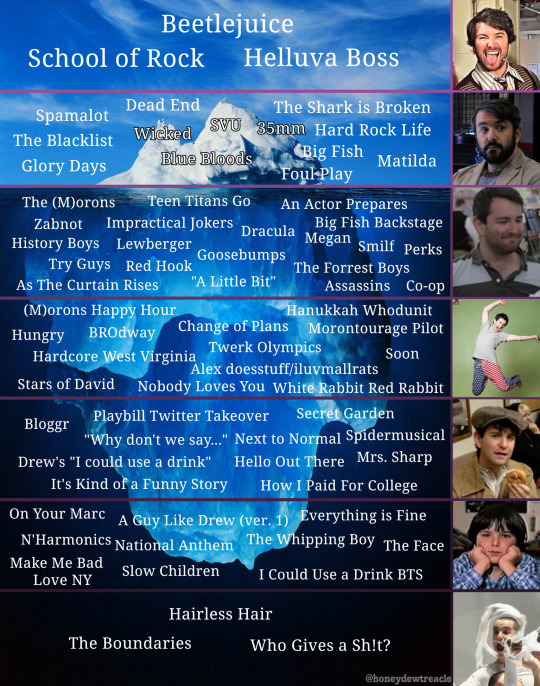
#I'm still not sure about the arrangement#but its okay#pleaaaaasee ask me about anything i love talking about this stuff#if u send me an ask I'll add any media i might have relating to a topic#if i have any of course#alex brightman#school of rock the musical#school of rock broadway#the (m)orons#beetlejuice bway#beetlejuice musical#bjtm#im too shy to put a proper helluva boss tag but that too#oh also im totally down to update this if anyone has good additions#i just didn't want to put his whole imdb on this thing so i picked ones that seemed relevant#brightyberg#brighty
61 notes
·
View notes